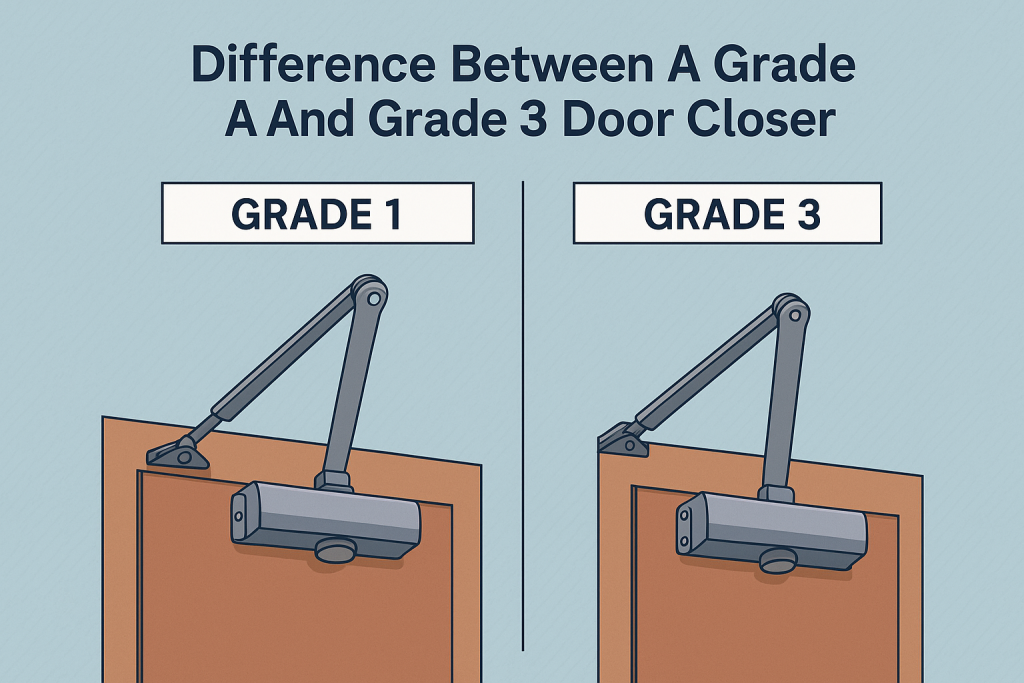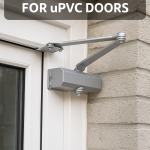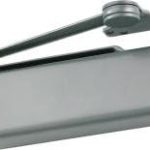What’s the Deal with Door Closers? Grade 1 vs. Grade 3 Breakdown
Hey there, door enthusiasts—or, more likely, folks just trying to figure out why their office door slams shut like it’s auditioning for an action movie. If you’ve ever walked into a building and noticed a door closing smoothly behind you (or not), you’ve interacted with a door closer. These unsung heroes of hardware keep doors in check, but not all closers are created equal. Today, we’re door closers, specifically the difference between Grade 1 and Grade 3. Spoiler alert: it’s not just about how hard the door shuts. Let’s break it down, compare the two, and unpack what it means for you—whether you’re a homeowner, a facility manager, or just someone who hates a door that won’t stay closed.
What’s a Door Closer, Anyway?
Before we get into the Grade 1 vs. Grade 3 showdown, let’s set the stage. A door closer is that mechanical gizmo mounted at the top of a door (or sometimes hidden in the frame or floor) that makes sure the door closes after you’ve walked through. It’s not just about convenience—closers are key for fire safety, energy efficiency, and keeping your space secure. Imagine a fire door that doesn’t close properly—yep, that’s a problem. Or a shop entrance that stays open, letting all the AC escape. No thanks.
Door closers are rated by grades, set by the ANSI/BHMA A156.4 standard, which is like the cool kid’s guide to door hardware performance. These grades—1, 2, and 3—tell you how tough a closer is, based on how many times it can open and close without giving up the ghost. Grade 1 is the heavyweight champ, while Grade 3 is more like the scrappy underdog. Let’s see how they stack up.
Grade 1 vs. Grade 3: The Basics
So, what’s the core difference? It’s all about durability, strength, and where these closers shine. Here’s the quick and dirty:
- Grade 1 Door Closers: These are the heavy-duty beasts. Tested to survive 2 million cycles (one cycle = a full open and close) at 60% efficiency, they’re built for places where doors get a serious workout—like mall entrances, hospitals, or busy office lobbies. They’re tough, reliable, and ready for anything, including high winds or heavy doors.
- Grade 3 Door Closers: These are the light-duty option, tested for 500,000 cycles at 50% efficiency. They’re fine for low-traffic spots, like your home’s front door or a quiet office closet. But don’t expect them to keep up in a high-traffic zone—they’ll burn out faster than a cheap pair of sneakers.
To make this crystal clear, let’s throw it into a table:
| Feature | Grade 1 | Grade 3 |
|---|---|---|
| Cycle Count | 2,000,000 cycles at 60% efficiency | 500,000 cycles at 50% efficiency |
| Best For | High-traffic commercial (stores, schools) | Low-traffic residential or small offices |
| Durability | Extremely durable, built for abuse | Basic durability, suited for light use |
| Cost | Higher upfront cost | Cheaper but may need frequent replacement |
| Applications | Exterior doors, heavy doors, windy areas | Interior doors, closets, low-use spaces |
Breaking Down the Differences
Alright, let’s get into the nitty-gritty. The gap between Grade 1 and Grade 3 isn’t just about numbers—it’s about performance, longevity, and what you’re actually getting for your money. Here’s how they differ in the real world:
1. Durability and Cycle Count
The cycle count is the big one. A Grade 1 closer is like the marathon runner of door hardware—tested to handle 2 million opens and closes without breaking a sweat. That’s like opening a door 5,000 times a day for over a year! Meanwhile, Grade 3 closers are more like sprinters, good for 500,000 cycles. In a busy setting, a Grade 3 closer might need replacing every few years, while a Grade 1 could last a lifetime. For perspective, a convenience store entrance might see 5,000 cycles a day, making Grade 1 the only real choice.
2. Strength and Efficiency
Grade 1 closers are beefier, with a minimum efficiency of 60%. This means they can close a door with less energy loss, even against wind, air pressure, or a heavy door. Grade 3 closers, at 50% efficiency, struggle with heavier doors or tricky conditions like stack pressure (that weird force when a building’s HVAC system fights the door). If you’ve got a big exterior door, Grade 3 might leave it flapping in the breeze.
3. Applications and Use Cases
Where you’re installing the closer matters. Grade 1 closers are the go-to for high-traffic spots like schools, hospitals, or retail stores. They’re built to handle constant use, extreme weather, and even a bit of roughhousing. Grade 3 closers? They’re more at home in your guest room or a storage closet. Stick a Grade 3 on a busy shop door, and you’re asking for trouble—it’ll wear out faster than your patience in a DMV line.
4. Cost vs. Value
Here’s where it gets cheeky. Grade 3 closers are cheaper upfront, which makes them tempting if you’re pinching pennies. But here’s the catch: they’re like buying a budget phone that dies in a year. A Grade 1 closer might cost more upfront, but it’s a one-and-done deal. Grade 3 closers, with their shorter lifespan, could have you shelling out for replacements every few years. Over time, that “cheap” Grade 3 might cost you more.
5. Features and Extras
Grade 1 closers often come with bells and whistles like backcheck, which stops a door from being flung open too hard (think wind or an overly enthusiastic kid). They might also have adjustable closing speeds or delayed action for accessibility, making them ADA-compliant. Grade 3 closers? They’re usually bare-bones, with fewer features. If you need a closer that plays nice with wheelchairs or strollers, Grade 1 is your best bet.
Why Does This Matter? The Implications
Okay, so why should you care about door closer grades? It’s not just about geeky hardware specs—choosing the wrong one can mess with your building’s safety, efficiency, and even your wallet. Here’s why it’s a big deal:
Safety First
Door closers are critical for fire-rated doors. A Grade 1 closer ensures a fire door closes reliably, stopping smoke and flames from spreading. A Grade 3 closer might not cut it in a commercial setting, putting lives at risk. Plus, a weak closer could fail to latch a door properly, leaving your space less secure.
Energy Efficiency
Ever notice how a poorly closing door lets all the heat or AC escape? In a commercial building, that’s money down the drain. Grade 1 closers are better at keeping doors shut tight, helping maintain indoor temperatures and saving on energy bills. Grade 3 closers might not seal the deal (pun intended) in high-traffic or exterior applications.
Long-Term Savings
Sure, Grade 3 closers are cheaper, but they’re a false economy in busy settings. A Grade 1 closer’s durability means fewer replacements, less maintenance, and lower costs over time. For example, if a Grade 3 closer fails after 3–5 years in a moderately busy office, you’re buying a new one. A Grade 1 could last decades.
Accessibility and Compliance
If your building needs to meet ADA standards (like keeping opening force below 5 pounds for interior doors), Grade 1 closers often have the adjustability to make that happen. Grade 3 closers might not have the finesse to meet those requirements, especially in high-traffic areas.
Insights: What’s the Smart Play?
Now that we’ve got the differences down, let’s talk strategy. Choosing between Grade 1 and Grade 3 isn’t just about picking the “best” one—it’s about matching the closer to your needs. Here are some insights to guide you:
- Know Your Traffic: Estimate how many times your door opens daily. A convenience store might hit 5,000 cycles, screaming for a Grade 1. Your home’s front door? Maybe 50–100 cycles, so a Grade 3 could work. For medium traffic (like a small office), consider a Grade 2 as a middle ground.
- Think Long-Term: If you’re in a commercial space, don’t skimp. A Grade 1 closer is like buying a quality pair of boots—you pay more upfront, but they last. For residential use, a Grade 3 might be fine, especially for interior doors or low-use spaces.
- Check the Door Size: Bigger, heavier doors (think 36–48 inches wide) need the muscle of a Grade 1 closer. Smaller doors (24–28 inches) can often get by with a Grade 3, as long as traffic is low. Check manufacturer charts for exact sizing.
- Consider the Environment: Exterior doors face wind, rain, and temperature swings, so Grade 1 is usually the safer bet. Grade 3 closers are better for calm, indoor settings where the door isn’t battling the elements.
- Don’t Ignore Aesthetics: Grade 1 closers often come in sleeker designs or with concealed options for a cleaner look. Grade 3 closers might be bulkier or less polished, which could matter if you’re going for a high-end vibe.
Real-World Scenarios
Let’s paint a picture. Imagine you’re managing a bustling coffee shop. The front door is swinging open 5,000 times a day—customers, deliveries, you name it. A Grade 3 closer would be toast in a few years, leaving you with a door that doesn’t close properly and a chilly shop in winter. Go for a Grade 1 closer with backcheck and adjustable speed to keep things smooth and safe.
Now, picture your home. The guest room door doesn’t get much action—maybe a few opens a week. A Grade 3 closer is probably fine here, keeping costs low without sacrificing function. But if you’re installing it on your front door, which sees more use and weather, you might want to step up to at least a Grade 2.
The Cheeky Conclusion
So, what’s the verdict? Grade 1 door closers are the rock stars—durable, versatile, and ready for the big leagues. Grade 3 closers are the budget-friendly opening act, fine for low-key gigs but not built for the main stage. Choosing the right one comes down to knowing your door’s vibe: Is it a high-traffic diva or a chill wallflower? Match the closer to the job, and you’ll save money, headaches, and maybe even a few slammed fingers.
Next time you’re shopping for a door closer, don’t just grab the cheapest one. Think about the long game—durability, safety, and efficiency. A Grade 1 closer might feel like a splurge, but it’s the kind of investment that pays off when your door’s still closing like a champ years later. Got a quiet closet door? A Grade 3 will do the trick without breaking the bank. Whatever you choose, make sure it’s got the right stuff for your space. Now go forth and keep those doors in check!



